While every decade has its icons, the 1970s have so many good models to choose from. It was a time when the Japanese were really stamping their authority over the scene, flexing muscles and cylinders with each other, and driving once-mighty international brands into obscurity. Despite the changing landscape, the 70s created some of the most exciting and innovative motorcycles of all time.
The 70s was such a good decade for motorcycles that we’re currently in the middle of a revival. Think about it: the new wave of retros has totally been inspired by the 70s. A few years ago, it was all about bringing the 60s back, but now we’re in 70s territory, We’ve got the Ducati Desert Sled, the XT-inspired XSR-series from Yamaha, Kawasaki’s reborn Z900 RS, and a whole host of 70s revival Hondas like the CB1100 and even the little Monkey.
There are so many iconic bikes that came out of that decade that it’s hard to choose ten. However, we’ve done our best and tried to give a snapshot of some of the top models of the day. Naturally, there are tons that we’ve missed, and of course, we might have included a couple that you may not agree with.
BMW R90S
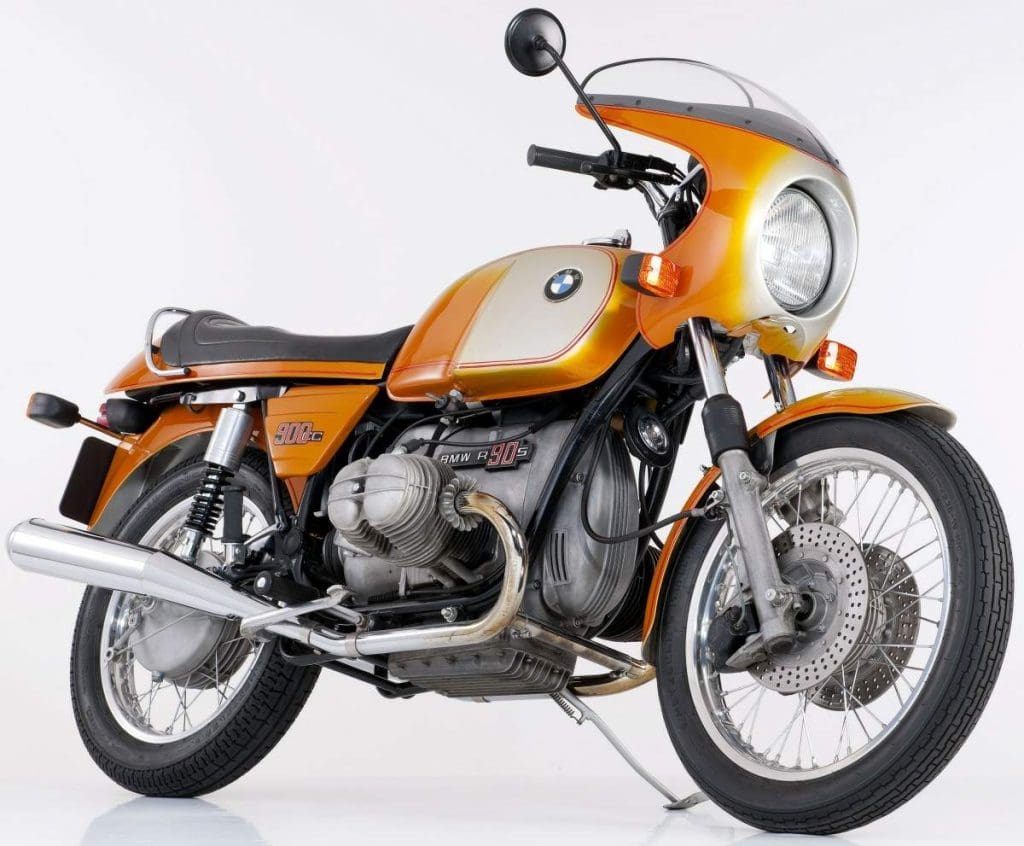
The BMW R90S is a 70s icon. Not only is it a fantastic motorcycle to look at but it also helped to shift the public’s perception of what a bike from BMW Motorrad could be. For many years, BMW’s motorcycles were often considered to be dull and uncharismatic. In the early 70s, BMW turned to legendary designer Hans Muth to help inject some fire into BMW’s motorcycle offerings. And the result was the R90S.
Far from being an old utility bike, the brand new R90S was a breath of much-needed fresh air from BMW. Not only was it a sports-focused machine, but it was also the first-ever production bike to feature a fairing as standard. While it’s not a full fairing, the advanced aerodynamics of that front fairing helped propel the R90S to incredible speeds.
All in, this 898 cc air-cooled, four-stroke, Boxer was able to produce a hearty 67 horsepower, hit a top speed of 124 mph, reach a quarter-mile in 13.5 seconds, and look phenomenal while it did it. It had real performance and managed to win at Daytona in ’76—hence the wonderful special edition Daytona Orange paint job that the R90S wears in the picture.
Honda CBX1000
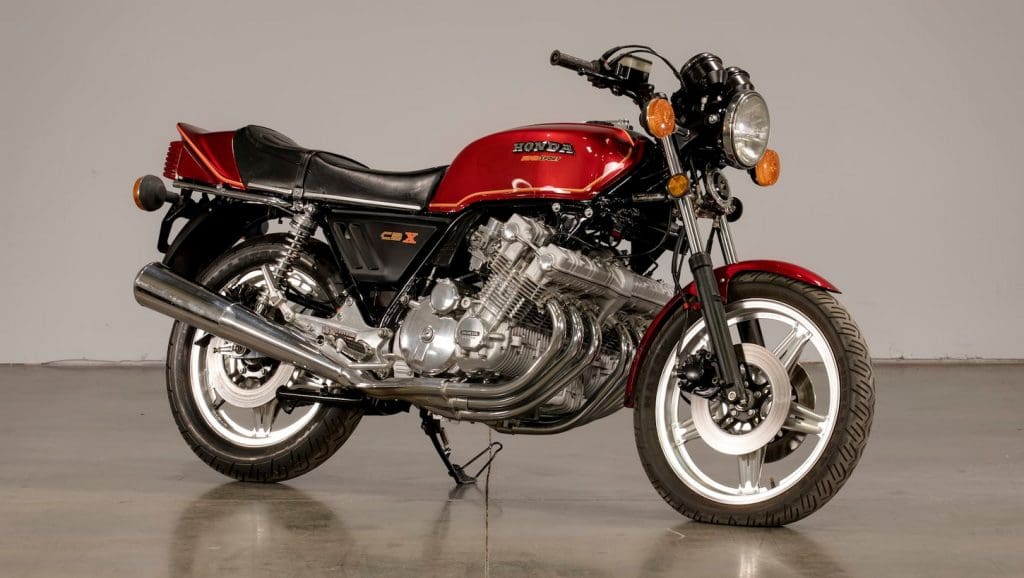
The Honda CBX is another classic 70s machine. It arrived at the end of the decade in 1978 and enjoyed a short run until 1982, but before it disappeared it left a lasting impression. The main reason? Well, that would be the engine.
Powered by an enormous 1,047 cc in-line six engine, the Honda CBX is anything but unforgettable. With that many cylinders, the Honda CBX was a powerful machine. It produced an impressive 105 horsepower, ran the quarter-mile in 11.36 seconds, and could hit speeds of around 11 mph. It was so good, even the marshals at the Isle of Man TT rode them in 1979 and 1980.
While the CBX was an engineering marvel, an instant head-turner, and arguably one of the coolest Honda’s ever made, it wasn’t Honda’s big seller of the era. Despite being Honda’s flagship machine, and lauded by the press, it was outsold by the CB900F. Both bikes are great, but only one of them has six cylinders. Given the choice, which one would you choose? Ten points are awarded to Honda for sheer daring if nothing else.
Harley-Davidson XR750
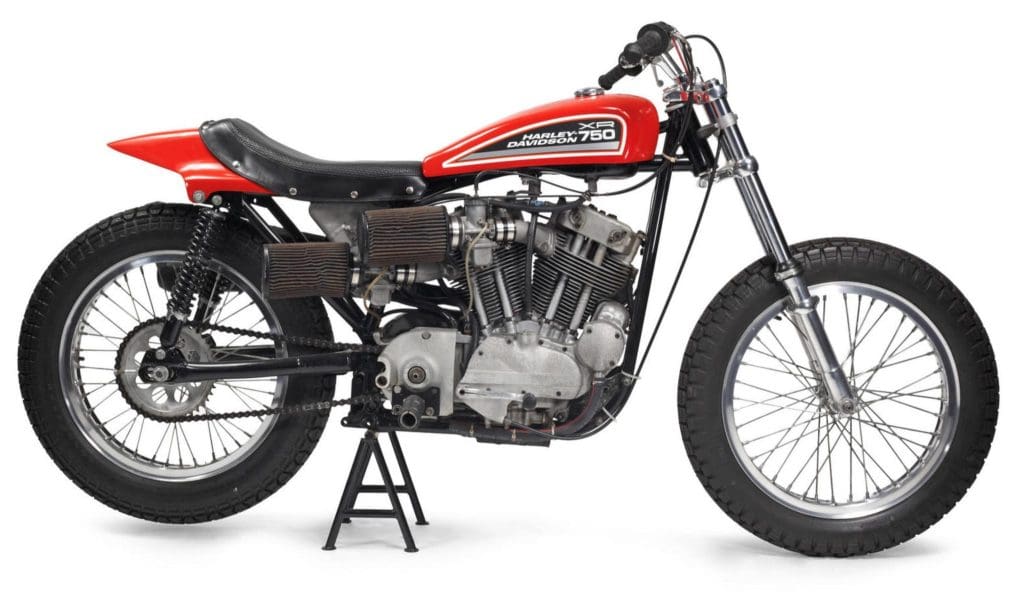
For many riders, 70s motorcycles don’t get any more iconic than the legendary Harley-Davidson XR750. If you could dilute a decade into a two-wheeled machine, then it would certainly by the XR750. This is a motorcycle designed and built for dirt track racing, developed specifically to bring the fight to foreign manufacturers who were looking at dethroning HD on track.
Given a sporty profile, an aggressive riding stance, and powered by a powerful air-cooled 748 cc V-twin engine that produced 82 horsepower, the XR750 was an entirely new breed of racing machine that could hit speeds up to 115 mph and dominate race tracks.
A shopping list of famous riders owes their careers to the Harley-Davidson XR750, including Jay Springsteen, Mark Brelsford, Cal Rayborn, and another guy that you might have heard of called Evel Knievel. It could jump buses, it could slide around corners, it handled superbly, and most importantly: it could win. In fact, it won 29 out of 37 AMA Grand National Championships between 1972 and 2008, making it one of the most successful racing machines ever developed. Not bad for a company that makes low-slung cruisers with ape-hangers, eh?
Kawasaki Z1000
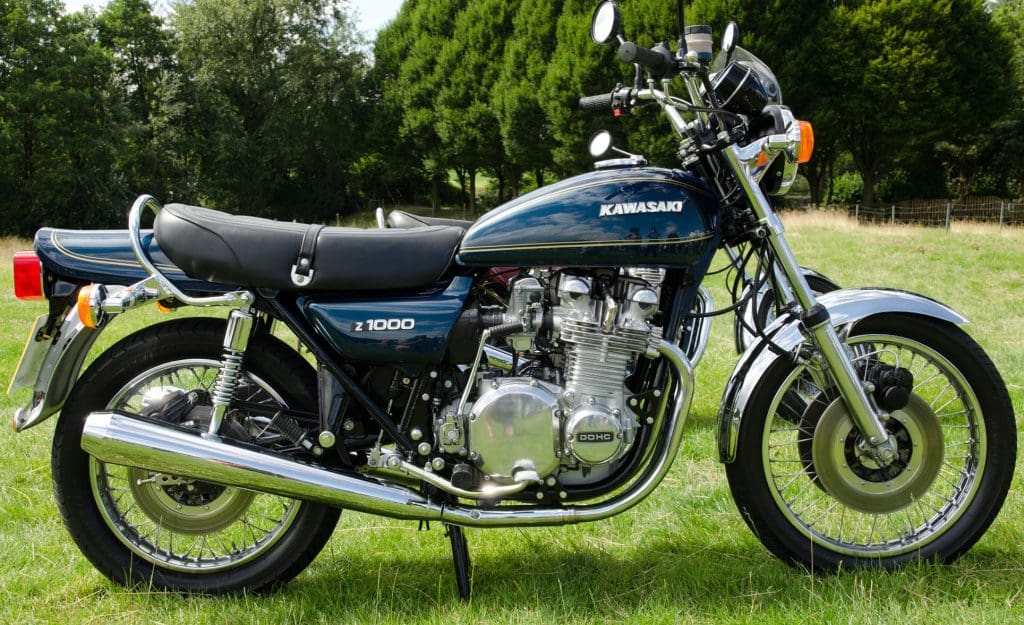
The Z1000, or KZ1000 depending on your locale, is not just one of the best motorcycles of the 1970s. It’s was one of the greatest motorcycles ever made. Not to be confused with the Z1, the Z1000 was conceived during Honda and Kawasaki’s arms race for sportbike supremacy throughout the 70s. While Kawasaki went on to develop a Z1300, with six cylinders to rival Honda’s CBX, the Z1000 is arguably the better of the two bikes.
It wasn’t faster, but at the time the Z1000 was the bike to have. Its 1,015cc air-cooled four-cylinder engine was a beast. It produced up to 90 horsepower and could propel the Z1000 to speeds of around 132 mph, making it one of the most powerful and fastest production bikes of the era. Fast on the roads, it was also fast on track too, with many household racing names like Wayne Gardner and Freddie Spencer clocking victories on board the Z1000.
And of course, let’s not forget that it became the weapon of choice for many police units too! Quite rightly so: not only was it fast and powerful, but it also looked fantastic too, even as a cafe racer.
Yamaha YZ 250
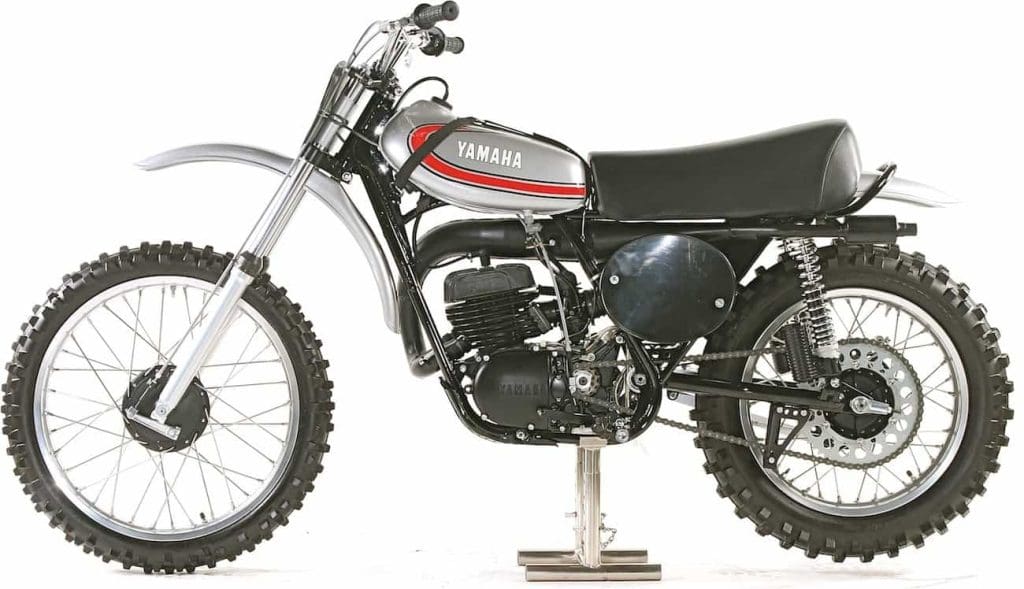
This one was a hard call. We wanted a Yamaha dirt bike in here, and it was a tough decision between the XT 500 and the YZ 250. While the XT is an absolute legend, it was the YZ 250 that won the day. Now, the YZ 250 is still a part of the current Yamaha line-up, and for good reason. It’s a capable, affordable, and potent trail-riding package that both new riders and experienced hands never tire of.
As one of the first real dirt bikes, the YZ 250 is something special. Sure, purists might say that the DT-1 had more of an impact, but the DT-1 debuted in the 60s and not the 70s (which doesn’t make it worthy of this list by that virtue alone) and secondly, the DT-1 is an inferior machine compared with the YZ. Powered by an air-cooled 250 cc two-stroke motor, it offered serious power but it offered superior handling too. And shortly after the YZ’s initial release, it was also updated with an innovative monoshock too.
Good luck trying to find an original 1974 model for your collection though. They’re quite rare, and when they turn up, they sell for a lot of money. Given the bike’s history and the future that it helped carve out, it’s one of the most desirable motorcycles for off-road enthusiasts and collectors out there.
Yamaha RD350
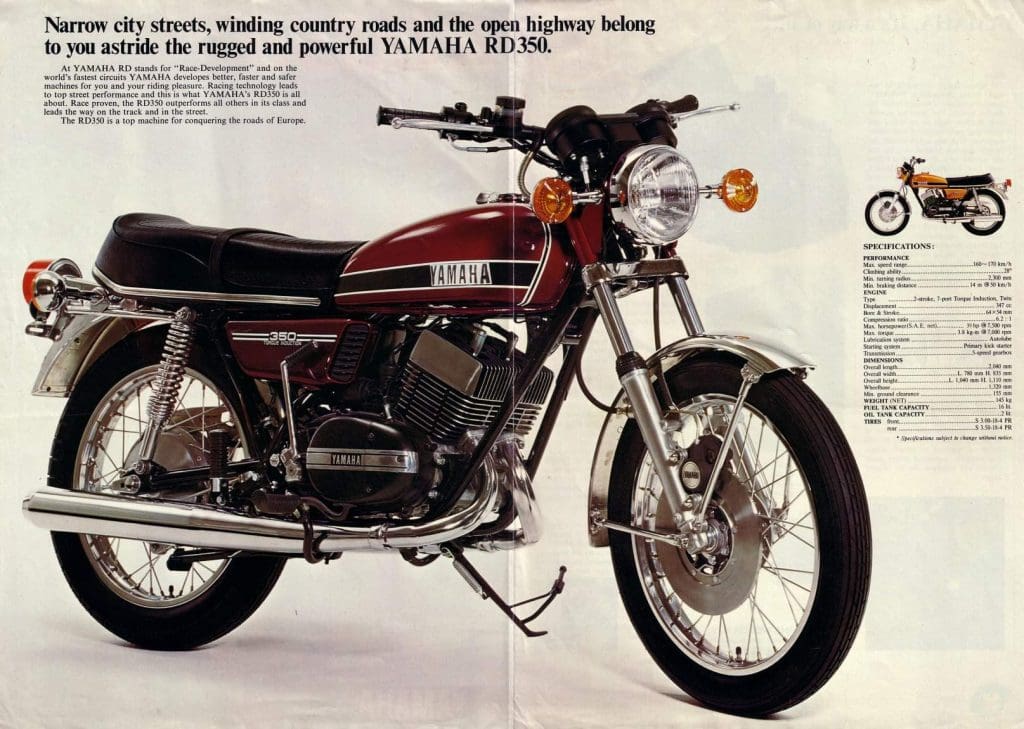
With Honda and Yamaha duking it out for large-capacity four-stroke sportbike supremacy, Yamaha was busy playing with smaller two-strokes and having twice as much, apparently. Ask anyone who was there at the time what the bike to have was and you can bet that the RD350 will be mentioned. It offered performance, handling, and true riding bliss, at a very affordable price point.
Dubbed “The Giantkiller” by many well-known moto journos, the RD350 was known to cause 750cc or 1000cc four-stroke owners sleepless nights as they lay awake wondering how their expensive and more powerful machines were consistently getting smoked by petite RD350s out on the twisties. And that’s no exaggeration.
Equipped with a small but potent 347 cc parallel-twin two-stroke engine, the RD350 produced 39 horsepower and approximately 105 mph as a top speed. That’s already impressive, but the secret to the success of the RD350 was its handling. Being smaller, it was incredibly agile and it was famed for its nimble and light handling, which ultimately gave it the edge over larger machines.
But most importantly, it was cheap when compared with other sports bikes of the day, such as the Ducati 750SS. This meant that a real racing experience could be had by almost anyone with a desire to go fast. It was the first real boy-racer machine.
Suzuki GS750
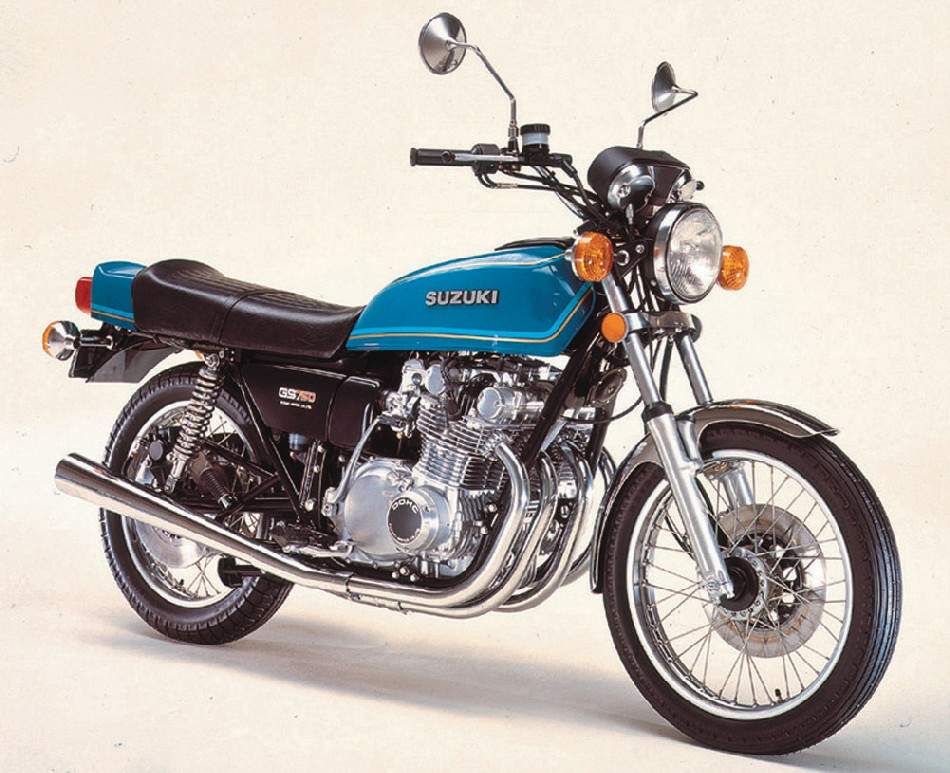
The Suzuki GS750 was Suzuki’s first real four-stroke motorcycle. Well, that’s not strictly true. House Hamamatsu had flirted with four-stroke engines in the 50s but only small-capacity units and now with any real enthusiasm. Instead, Suzuki was very much a two-stroke company. That is, of course, until big four-strokes were the thing to have. Suzuki changed its direction in 1976, with the model-year 1977 GS750 and accompanying GS400 twin.
In terms of innovation, the GS750 wasn’t much. Instead, it borrowed and refined a lot of the ideas present on the Kawasaki Z-series and bits from the Honda CB-series. For example, it was based around a ubiquitous 750 cc inline-four engine, so it was hardly special in that respect. However, it did feature what many would call superior handling, thanks to its double cradle frame design.
While it might not have the sex appeal of the CBs or the Zs, the GS750 is still a key model in motorcycle history. It was Suzuki’s flagship four-stroke sports motorcycle right up until Suzuki went and turned their sporting dreams right up to eleven with the introduction of the Suzuki GSX-R in the mid-80s.
Kawasaki H2 Mach IV 750
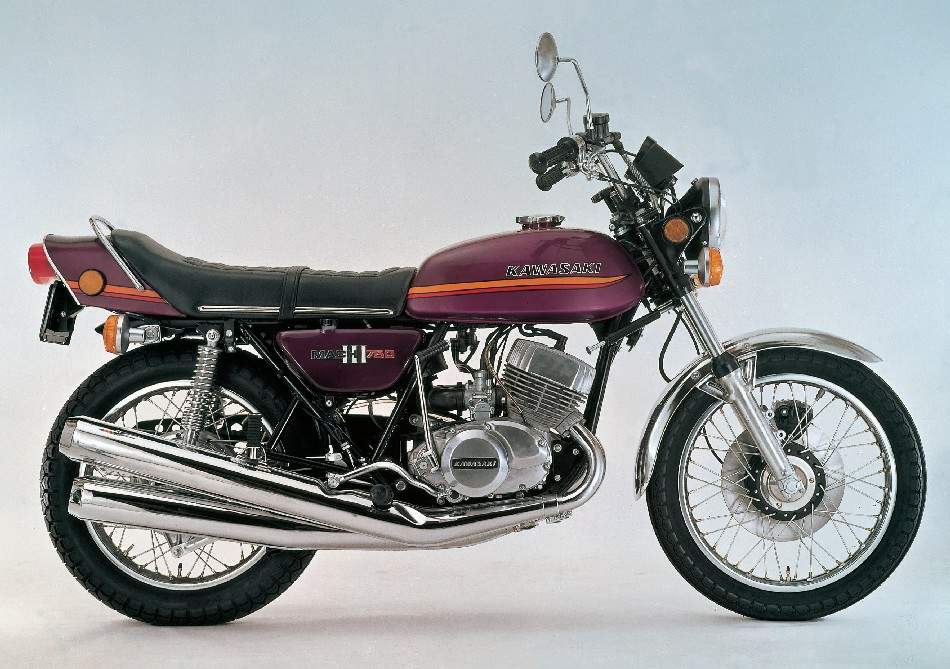
Kawasaki’s H-designated models are the stuff of legends. They paved the way for the modern H2 and H2R models that we lust over today, but back in the late 60s and early 70s, the H1 was the bike to have, that is of course until the devastatingly powerful H2 Mach IV 750 came along in 1972.
Featuring an immensely powerful 748 cc three-cylinder two-stroke engine that could generate up to 74 horsepower and 57 lb-ft of peak torque, the H2 meant business. Not only could it hit a top speed of 120 mph, but it could also run a quarter-mile in just 12 seconds. It was fast, and that was when it was left unfettered in factory form. As you can imagine, it didn’t take long for people to start tuning and squeezing more power from it.
The engine and power figures of the H2 Mach IV 750 certainly were impressive, but it wasn’t all good news. The earlier H1 was made for sharp dashes in straight lines and suffered from notoriously bad handling as a result. The H2 was no better, despite Kawasaki adding an innovative steering damper as standard, but that wasn’t enough to prevent speed wobbles and funny handling. Still, in the right hands and under the right circumstances, the H2 Mach IV was a lethal weapon.
Honda GL1000 Gold Wing
The Gold Wing is easily one of the most well-known and recognizable motorcycles on the road today, but Big Red’s touring behemoth started life in a very different shape than the one we’ve come to know and love today. When the first Gold Wing, the GL1000, first rolled onto the scene in 1974, it was dubbed the “King of Kings” and it was built to give Honda’s American fans a more touring-friendly ride than the likes of the CB750 could offer.
Built around a shaft-driven 999cc liquid-cooled horizontally-opposed flat-four engine that could produce 80 horsepower, 63 lb-ft of peak torque, and reach a top speed of approximately 125 mph, the Gold Wing had a sporty nature but in a package that was better suited for comfortable long-distance riding. And it helped transform the touring landscape into what we see today.
It was such a marvel that the Society of Automotive Engineers of Japan has named the original Gold Wing GL1000 as one of its 240 Landmarks of Japanese Automotive Technology. Today, the Gold Wing is still a key feature of the contemporary Honda line-up, though its DNA has evolved somewhat. It’s no longer that svelte 1,000 cc that it was. Today, it’s a giant 1,800cc horizontally-opposed flat-six beast with more bells and whistles than we’d ever know what to do with.
Ducati 750 Super Sport
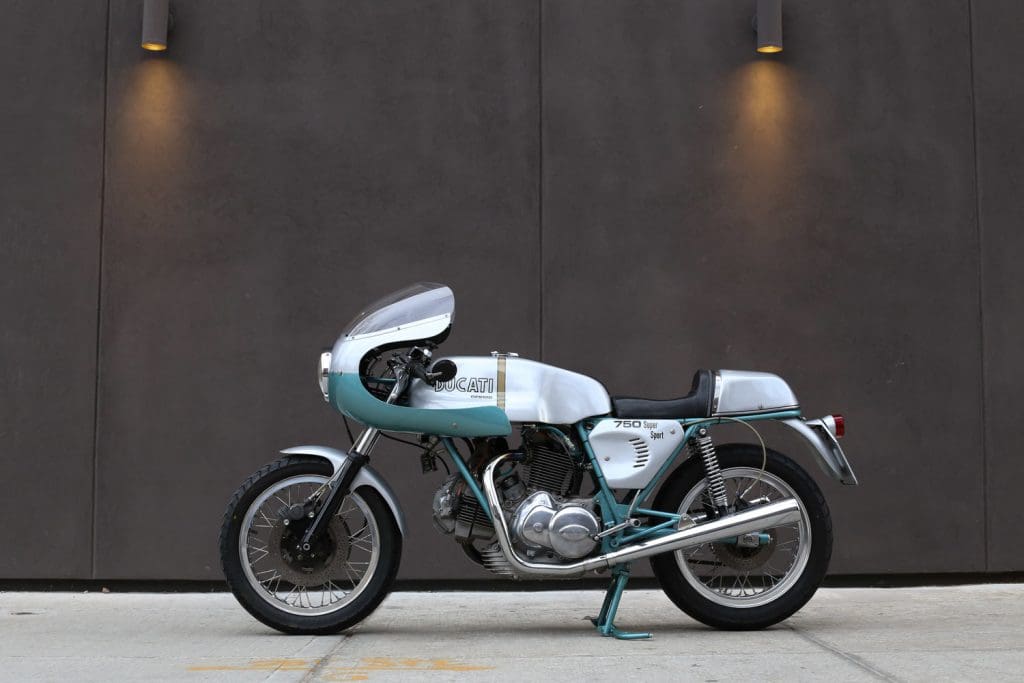
We’ve had Japanese, German, and American bikes so far, so let’s end with an Italian. While it would be tempting to leap directly to MV Agusta, the truth is that the 1974 Ducati 750 Super Sport is a far superior example of what a real Italian sports bike from the 1970s should look like. It was a real race replica, and it took its cues directly from the race-winning machine that dominated the Imola 200 in 1972.
Underneath the gorgeous exterior, the 750 SS came equipped with a stunning 748 cc V-twin engine that produced a hearty 73 horsepower and could hit top speeds of up to and around 125 mph. Complete with a big “Imola” race tank, a race fairing, and an all-important race “hump” seat, this road bike was closer to a real racing motorcycle than many other production bikes with racing DNA on the market at the time.
Only 401 examples of the first 750 SS were made, and it’s unclear how many exist to this day. It’s a real rarity, and quite possibly one of the most sought-after Ducatis in existence. While it might not be the most famous Ducati to ever go into production, it’s easily one of the most iconic motorcycles that the Bologna factory produced in the 1970s.


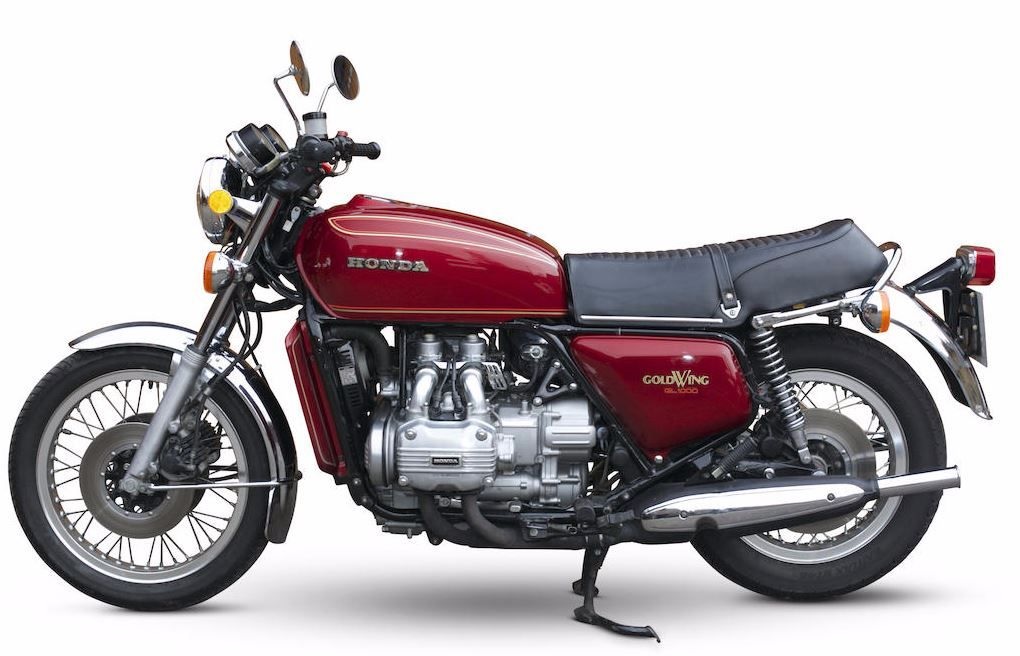

After spending a couple of hours waiting for a jump from AAA last weekend, I’m eying those kick starters with envy. Beautiful bikes, especially the Z1000, which I remember as making anyone who owned one an instant bad-ass.
Yep Jimmy “the goose” Gosling from Mad Max 1 helped make these iconic. The Z1 scenes from this film are very rewatchable!!
The Yz 500 was awesomer.
“ Powered by an enormous 1,047 cc in-line six engine, the Honda CBX is anything but unforgettable.” Eh??
“It produced an impressive 105 horsepower, ran the quarter-mile in 11.36 seconds, and could hit speeds of around 11 mph.” Eh??
RITE ON RITE ON..
Very good choices. I agree with all, except the absence of the Z-1, which is arguably one of the most significant motorcycles in history. I would list the Z-1 in place of the KZ1000 and then add the Suzuki GS1000 to the list in place of the GS750. The GS1000 was the first big Japanese bike to handle well, even though the engine was nearly identical in design to the Z-1 and KZ1000. It was the complete liter bike package, IMO. No question about the other selections.
I agree with you about the 1973 Z1 900. I had an H2 750 and it was something. Glad it had disc brakes. Ha. But I rode a 900 four stroke and it was smoother and just as fast. Regretted not trading.
Speaking of legendary designer Hans Muth…
If you do legendary bikes of the 80s Joe,
please include the original silver 1100 Katana.
It looked like no other, and that roller bearing mill was
a bullet proof gem.
80s coming at ya next month!
Good top ten! Hard to argue with your choices. Certainly some unforgettable bikes in there!
Highly subjective and more “iconic” than “best” bikes of the ’70s
The R90S was a great bike and a real game changer for BWM. The R100RS is a better bike, especially after ’88 when they adopted the single shock rear.
The CBX was an engineering marvel but an underperformer. The last two years were doggy touring mashups
The KR and YZ deserve the attention. As does the RD350. The RZ350 and RZ500 are even better by quantum leaps but they weren’t ’70s.
KZ1000 and GS750 were good fast bikes but not outstanding in stock form
Kawi H2 should be replaced with the H1 (500cc). The H2 was faster, by a little bit, in a straight line but the H1 was faster, more responsive, and better handling everywhere else.
The Gold Wing is interesting as it was originally intended to be a power bike like the V-Max. The smooth engine and Craig Vetter changed all that.
The less said about the Ducati the better. Fragile, over-priced, and a parts and maintenance nightmare. Perhaps it looked good in some lawyer’s office.
Having lived through that magnificant motorcycle era,and ridden all but the cbx and even owned a few on your list. I couldn’t agree more with your selections. Long live those giant slayer rd-350’s
In 1973 I purchased a RD 350 used very little. I took the bike to WVU and used to pop wheelies with my roomie and girlfriend aboard. It was a super bike for me, have so many memories. Great to see it was 1 of the top bikes from the 70’s.
Kz 900 was a bad boy but I also loved my Honda cb 360 enduro if were talking dirt riding it wasnt a 70’s bike but it was close Kawi 125 3 wheeler it wasnt anything special but it still my personal favorite man wish I still had them thanks for the trip down memory lane
I bought a GS750 when they first came out in England. Loved the bike but “superior handling” ? definitely not.
Honda CR125 Elsonora
Yamaha XS-650